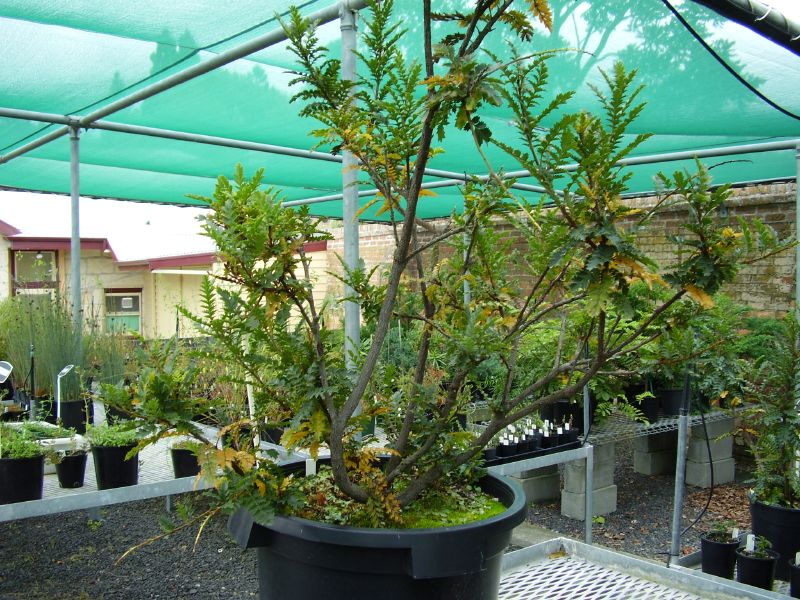
https://en.wikipedia.org/wiki/Lomatia_tasmanica#/media/File:Lomatia_9e7o.jpg
Recently, I was sitting at my kitchen table and contemplating the plant hanging next to the window. I realized that in 2001, it had been a cutting taking root in a small pot and now I had a large houseplant with feet of runners. Of course, this is not the oldest plant in my house. That honor goes to the aloe plant I was given in graduate school, making it about 15 years old.
However, my houseplants (and even my outdoor perennials) are not even dust compared to the more than 43,000 year old Lomatia tasmanica currently living in southwestern Tasmania. This ancient shrub, named King’s holly after the tin miner who first discovered it, is composed of about 500 individuals sprawled over 1.2km (about a mile for those less familiar with the metric system). How did scientists date this plant? The fossilized leaf fragments discovered 8.5km (5.3 miles) from L. tasmanica’s current location had identical leaf and cell structure compared to the living shrub. Carbon dating of charcoal in the same layer as the fossils yielded the date of 43,600 years.
Several lines of evidence have led scientists to conclude that L. tasmanica found in the present is likely a clone of the leaf fossils found. First, the living shrub is a triploid, meaning it cannot reproduce sexually. While L. tasmanica flowers and fruits, the fruit is sterile. Instead, small pieces break off the plant and then slowly root into the ground, spreading out over time. While there are related plants that clonally reproduce (e.g., L. tinctoria and L. polymorpha), they also are diploid and thus, can sexually reproduce. The rarity of triploidy occurring in any plant suggested that the fossil fragments were also triploid because the leaf and cell structure are identical to those of the living plant.
Second, the growth of King’s holly is remarkably slow. Dendrochronology dated a 6.3cm stem as ~240 years old, a growth rate of 0.26mm per year (as cited in reference 1). At this glacial pace, such a plant could persist in a confined location for several hundred or thousands of years.
Third, there is no genetic variability among the living shrubs. An analysis of 16 isozyme loci using 78 stems collected from throughout the range of L. tasmanica revealed no polymorphism (1). This evidence reinforced the idea that this was a single clonal plant.
The persistence and durability of Lomatia tasmanica awes me. That a plant could survive so long only using clonal reproduction is impressive. While King’s holly has weathered the many challenges of time, disease and fire still threaten extinction of the ancient shrub despite its residence in a national park. Regardless, I hope this unique specimen will clonally reproduce for another thousand years. My houseplants can only dream of such an existence.
Reference:
1. Lynch, A.J.J. et al. (1998) Genetic evidence that Lomatia tasmanica (Proteaceae) is an ancient clone. Australian Journal of Botany 46, 25-33.
Additional Reading:
Tasmania Parks & Wildlife: Kings lomatia
Botanical Electronic News: The oldest living plant individual
Image credit: Tasmania Parks & Wildlife
Sara Klink
Latest posts by Sara Klink (see all)
- A One-Two Punch to Knock Out HIV - September 28, 2021
- Toxicity Studies in Organoid Models: Developing an Alternative to Animal Testing - June 10, 2021
- Herd Immunity: What the Flock Are You Talking About? - May 10, 2021

Certainly it has been shown that plants produce catecholamines (dopamine, norepinephrine and epinephrine), so to suggest that they can dream may be acceptable (REM must certainly occur in potatoes). But whether they can recall their dreams may be another story.
In this vein, do long-lived clonal shrubs dream of sexual reproduction? Or just a little more land to spread out upon? Must ponder this…